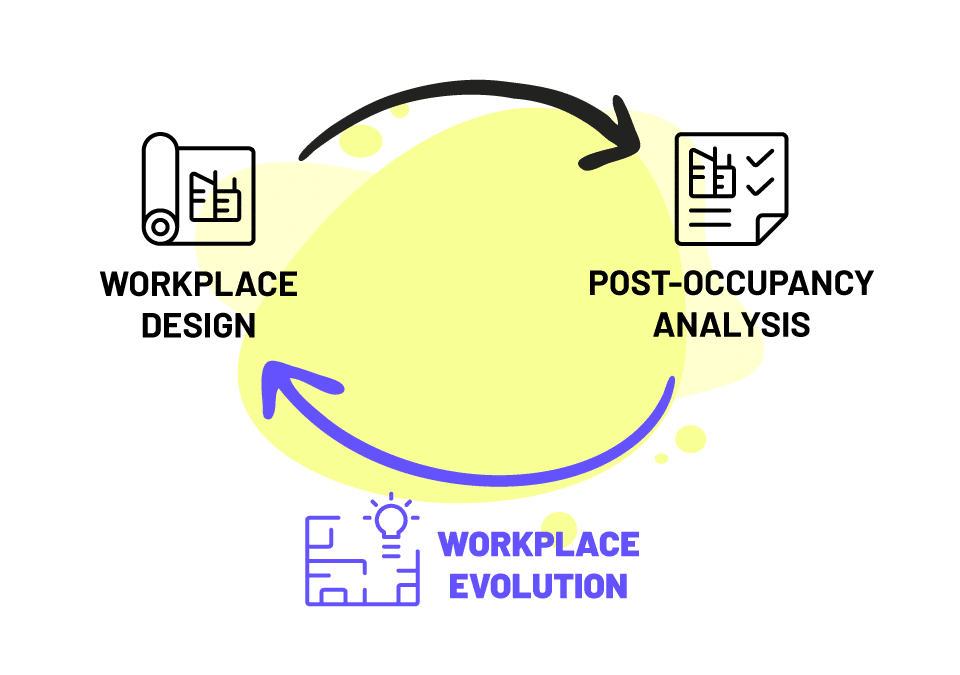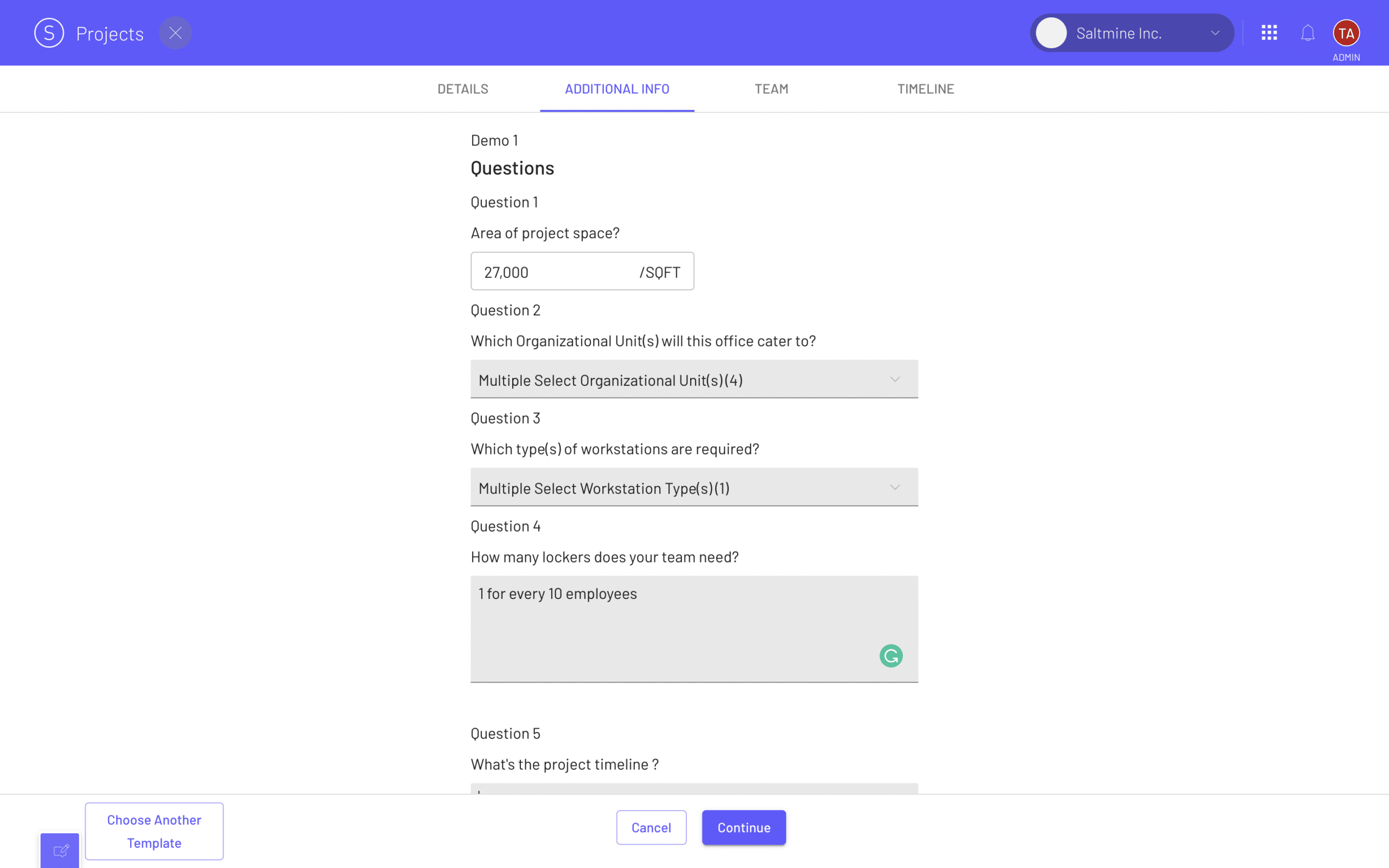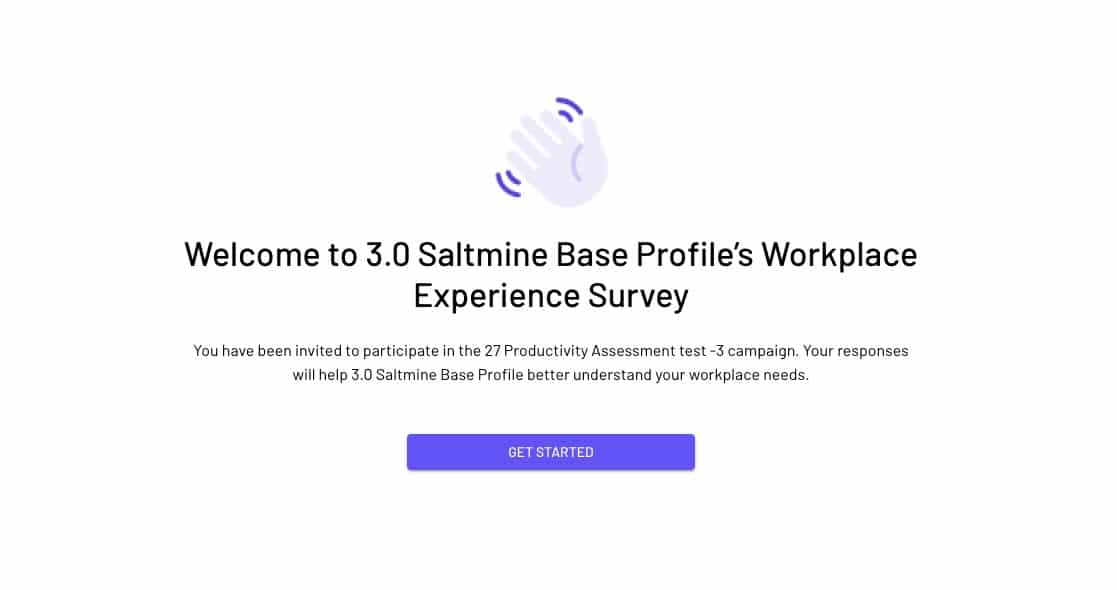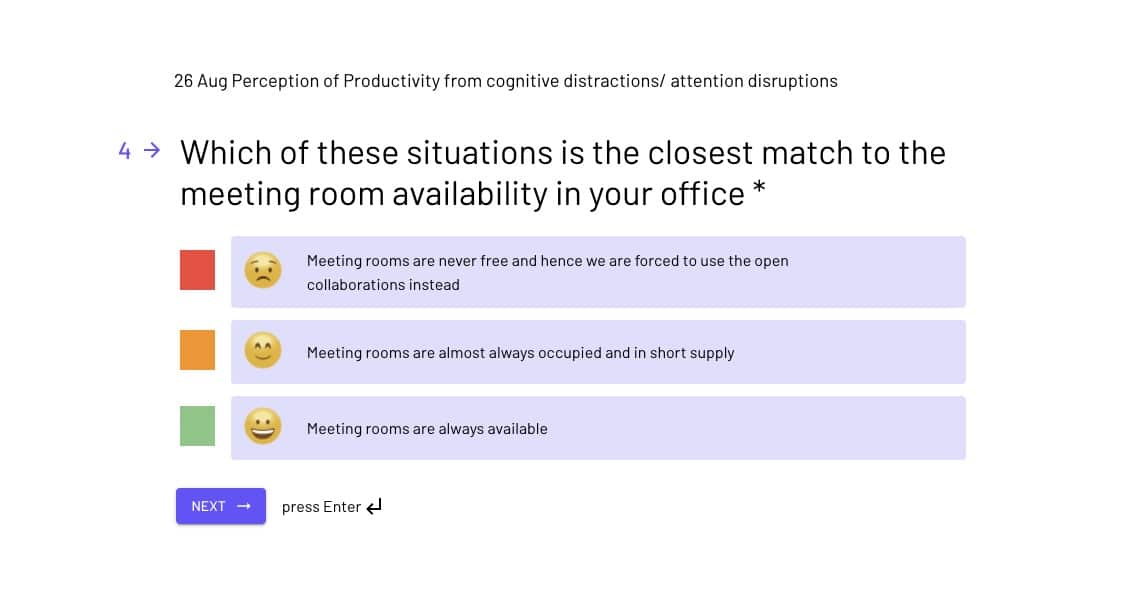How a workplace evolves—with your people in mind—should be at the foundation of your workplace design. Here’s how Saltmine’s 3.7 release can help.
One of the biggest gaps in workplace design is the lack of access to post-occupancy analysis. Even though the data collected in such a study is worth its weight gold for evolving workspaces—or creating new ones—in the future. This historically broken “feedback loop” between the owner/occupier and designer means both parties miss out on key data points that would otherwise allow them to learn and continually adapt to—and evolve with—changing workplace standards and workstyle preferences.
Once a space is completed, the dialogue with a designer shouldn’t end. The designer and owner/occupier should analyze post-occupancy data together to better understand how the space is—or in some cases, isn’t—working. Sure, you can rely on expertise and past experience to design a good workplace—professional designers have a good sense of what works and what doesn’t. However, a sense is still just a sense. What is needed in workplace evolution are quantifiable metrics—and until occupants are actually occupying and using a space, it’s nearly impossible to measure and analyze how the design works. You’re not only unable to fully view what does and doesn’t work for your space, but more importantly, what does and doesn’t work for your people.
This common conundrum isn’t a technology issue either—we already utilize tech such as occupancy sensors to track how an office is being used. However, what is missing is a platform to connect the dots between design and occupancy and between designer and occupant. In short, workplace design requires holistic tools that make people the foundation of design—tools that challenge the status quo and break down the silos between the owner/occupier and designer. 
Saltmine’s 3.7: Connecting Occupancy Data to Your Evolving Workspace
We’re excited to announce our new 3.7 release of Saltmine, which can help alleviate this broken feedback loop. With 3.7, owner/occupiers, designers, and anyone else who is currently involved in a CRE project can actively leverage occupancy data, with the next workspace evolution in mind.
The pain point 3.7 addresses
When addressing the broken feedback loop between the owner/occupier and designer, it’s important to make decisions based on occupancy data—i.e., who is using the space and how they’re using it. That said, simply looking at occupancy data of a space won’t paint the full picture. It’s important to have mechanisms in place to actually study, measure, quantify, and visualize just how space is being utilized in order to reimagine it. Occupancy data and visualizing space digitally hinges on looking at employee behaviors, workstyles, and preferences. The marriage of performance metrics with 3D digital documentation are a pain point for many owner/occupiers and their designers.
To help you overcome the previous pain points of evolving your workplace, here are some highlights of what we’re most excited about for 3.7.
3 notable features about 3.7
1. Insights 2.0 To aggregate data and customize dashboards, our new Insights 2.0 module allows all real estate data to be viewed in a single place as well as custom data set capabilities via CSV. Insights 2.0 allows Saltmine users to:
- Create robust, custom reports.
- Review all reportable parameters of a block across the platform, such as area, capacity, count, department, site, level, building, etc.
- Visualize various KPIs and metrics such as headcount, density, cost, and other project metrics in graphical formats.
2. Project Request
To enhance the overall experience for all users, our new Project Request feature streamlines the project management process within Saltmine by providing holistic visibility and automation with project tools in the platform. Users can request other internal and external stakeholders to review and approve projects in the dashboard, giving visibility into key projects. 
Finally, the Employee Heartbeat feature allows the occupier to capture real-time feedback from their employees. Saltmine users can design surveys and automatically distribute them to employees via email. Employee feedback can be reviewed in various Saltmine reports. 
- Can help you make data-driven decisions to align your workplace to employee needs.
- Streamlines the way workplace data and employee feedback is collected.
- Easily collects feedback from your key stakeholders—i.e., your employees—for your workplace design.

The above three features are just a few of the exciting additions we’ve developed for 3.7 so you can better design and strategize all things workplace within Saltmine.
Are you a current customer and want to learn more about 3.7 ? Check out our release notes for the latest updates. If you’re new to Saltmine and are interested in learning more, click on the demo link below for more details.
Enjoying our blog? Be sure to subscribe to stay up-to-date on Saltmine's original content with the form below!


